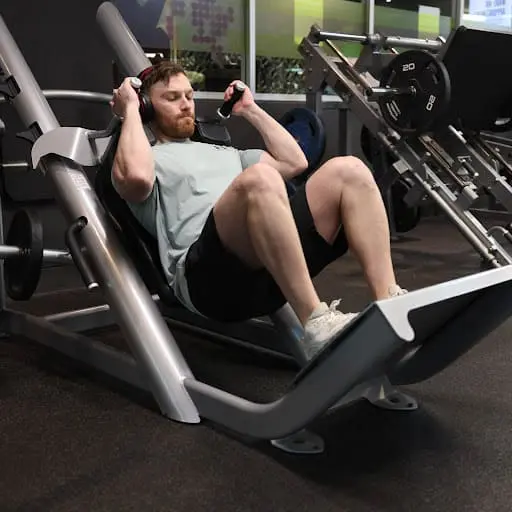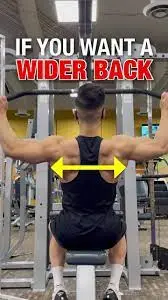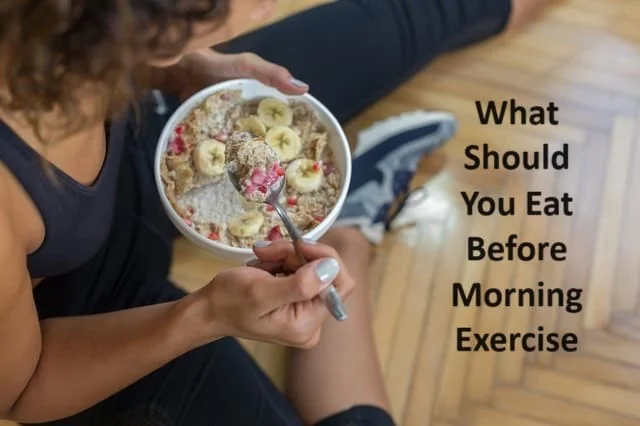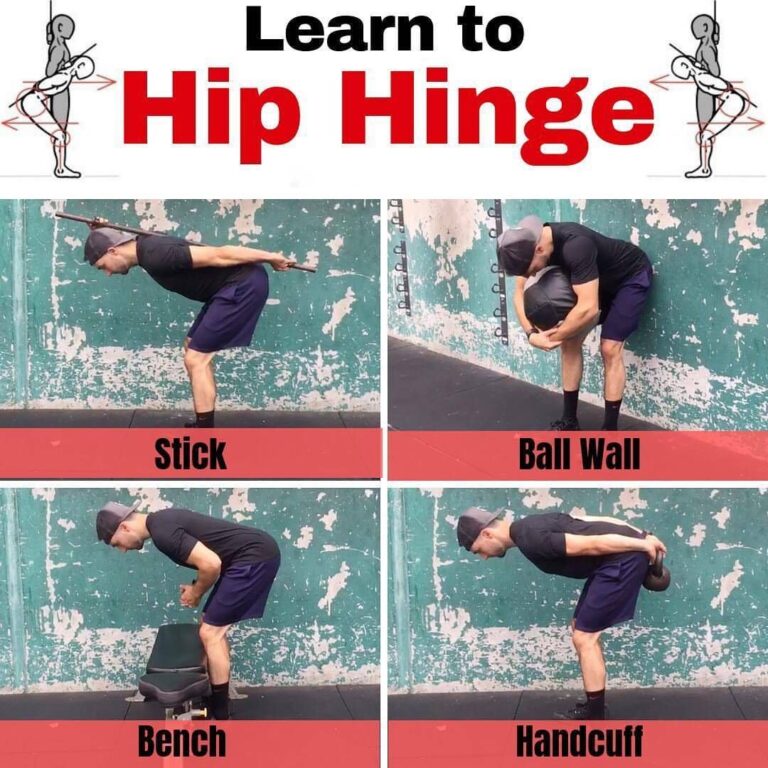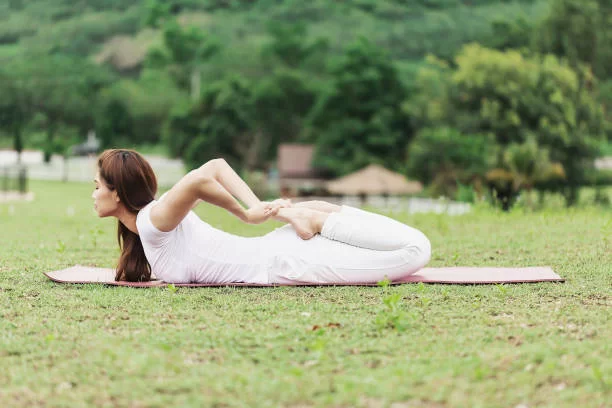Hack Squat Exercises
The hack squat is a popular strength training exercise that primarily targets the muscles in the lower body, specifically the quadriceps, hamstrings, and glutes.
It is an effective compound movement that also engages the muscles of the core and lower back. The hack squat is typically performed using a specialized machine designed to simulate the motion of a squat while providing support for the back and neck.
Introduction
Get next-level gains in leg strength through traditional squat variations that target different muscles and advanced levels. Learn hack squat variations that work every muscle in your legs, from the calves to the core, to develop a balanced lower body for a thorough and effective workout.
The whole lower body, including the core, glutes, hamstrings, quadriceps, and calves, is worked during a hack squat. Your front legs will feel the effects of putting more attention on your quadriceps later. If you’re new to the squat, a hack squat is an excellent way to build leg strength. If you want to build muscle in your legs, particularly your quadriceps, include the hack squat in your workout routine.
Hack squats, on the other hand, focus mostly on the hip joint and use the same joint movement as a regular squat. You must complete a standard squat while standing on a fixed platform in the hack squat.
Hack squats, compared to other exercises, focus the tension on the targeted muscles while using stable machinery that greatly reduces the need for stabilizing muscles and keeps everyone safe.
Muscles Activated in the Hack Squat:
Making careful use of the right muscles is important when doing the hack squat. Lifting your weight and protecting your joints are two benefits of radiating stress via your muscles. The hack squat works your lower body, but it also works your core strongly.
Quads: During this movement, the weight placement in the hack squat will accent your quadriceps and anterior chain more. The rectus femoris, vastus lateralis, vastus medialis, and intermedius are the four muscles that make up your quadriceps. Your quadriceps are responsible for the flexion of your knees upon coming down from a squat and the extension of your hips upon rising.
Hamstrings: Your posterior cord and hamstrings will be worked by the hack squat, though not as much as they will be by other exercises like the deadlift. The biceps femoris and semimembranosus, which make up your hamstrings, aid in knee flexion and hip flexion. For full body engagement and tension during the hack squat, it’s crucial to activate your hamstrings.
Glutes: You can feel your glutes in the hack squat by pushing through your heels and feet. This potent muscle group is composed of the gluteus maximus, gluteus minimus, and gluteus medius. By supporting your hip flexion in the hack squat and stabilizing your hips, thick glutes let you lift weights safely. Hip extension is also aided by your glutes. Take a strong stance in your Hack a Squat to feel how your glutes, hamstrings, and quadriceps cooperate to extend your hips.
Core: On the front of your body, the transverse and rectus abdominis muscles make up your core. The obliques that wrap around your body, both internal and exterior, are also included. The erector quadratus lumborum (QL) and latissimus dorsi are two of the posterior core muscles. To prevent your spine from moving under pressure, you should fully contract all of your core muscles during the hack squat. Your lats assist you in maintaining tension while holding the bar, and your erector spinae and QL quadratus lumborum will help shield your lower back.
Benefits of the key Hack Squat:
It is easy for beginners to perform:
- A hack squat is a machine-supported exercise that beginners can perform with little guidance on form and technique.” You are less likely to make a mistake or lose form when performing a hack squat because the machine stabilizes you continuously.
Build Your Quads:
- Trying a bodyweight hack squat will immediately cause your quadriceps to contract. Maintaining your weight behind you and spreading your feet shoulder-width apart will result in this.
- Get some significant shape if you can complete a lot of repetitions at a moderate weight during your workout.
Easy to set up:
- You simply add weight plates to the machine, which minimizes the effort of using a barbell and squat rack together, making it somewhat similar to a reverse leg press.
Provides Stability:
- Hack squats maintain your hips and upper back in a steady position, in contrast to squats done with free weights, which need a lot of core stability.
- Additionally, if you’re new to the weight room, barbell back squats can be substituted for that extra stability.
- Hack squats are probably safer than barbell squats because you can’t tumble backward or front and you don’t have to balance free weights. This is especially true if you’re new to the weight room.
Reducing Load on the spine:
- Barbell front and back squats are two effective lower-body exercises that also call for a great deal of strength and mobility in the upper body.
- They are designed to place a great deal of weight on your spine, especially your upper back.
- The hack squat can be a useful option if you want to squat heavily with a barbell while taking a rest for your upper body.
Improve Athletic Performance:
- Hack squats are a good exercise to do if you’re a runner or any athlete who has to run quickly for their sport.
- All of your attention will concentrate on using your lower body to move weight. It will make your feet, glutes, and legs stronger. The focus that hack squats place on your quadriceps also applies to running.
- A stronger quad will help you go forward more quickly. Hack squats are a great way to work your glutes and feet, and you should always plant your feet correctly for other sports or speed training.
Improve Mobility:
- Even though the hack squat requires less shoulder flexion than the front or back squats, it still requires your shoulders to be extended. Removing weight from that area can increase their range of motion.
Lower Body Strength:
- Due to its ability to work the quadriceps, hamstrings, and glutes, the hack squat may be performed with big weights with effectiveness.
- Hack squats are an excellent technique to develop lower body strength without putting as much strain on your lower back as barbell squats or deadlifts do. This is because you can target your legs with less effort on your lower back.
Knee Strengthening:
- Since it is commonly recognized that the hack squat has a lot of impact on the knee, many weightlifters refrain from the exercise completely. On the other hand, in healthy people with knee problems, this may put helpful strain on the knee’s connective tissues, potentially leading to long-term improvements in joint health.
- Lifters must learn to tolerate some discomfort to strengthen any joint, just as they would any muscle.
- The best way to increase joint strength is to apply (acceptable) stress to the joint; this can be achieved by employing progressive volume, suitable loading, and good technique.
Hack Squat Drawbacks:
- Apply pressure with your knees: Hack squats can be extremely tough on the knee joint, particularly if performed improperly or with excessive weight. Focusing on proper form and progressively increasing the weight load is essential to avoiding knee pain or injury.
- Not suitable for everyone: For individuals who are new to resistance training, hack squats might not be the greatest exercise. Hack squats can be challenging workouts for beginners in the strength training world, as they may lead to improper form and an increased risk of injury.
Who Needs to Perform the Hack Squat?
- Beginners: By keeping your torso raised and requiring some core engagement without a heavy load, the hack squat can assist beginners who are new to lifting and squatting in learning proper form. Additionally, it’s a great way to practice hip flexibility, which is an essential training skill but can be very challenging at first. The bar is positioned such that you must slightly bend your hips before squatting down. This is a movement that even beginners can learn without a barbell.
- Bodybuilders: To target specific muscles and make them show and grow, bodybuilders perform a lot of determined exercises. Additionally, they must perform compound exercises and maintain good coordination throughout their entire body. This is where functional exercises like the squat are useful. The hack squat is a great way to target specific muscles while maintaining your functional training because of its extra focus on the quadriceps.
- Powerlifters: Increasing their one-rep maximum in the bench press, deadlift, and squat is the main goal of powerlifters. Without overly straining your upper body, the hack squat is an excellent method to lift a little bit more weight and work your quads and legs. Gaining strength in your legs through the hack squat will eventually translate to your main lifts and help you accomplish your powerlifting objectives.
How to Perform Hack Squats Correctly:
Machine setup: First, adjust the hack squat machine to your desired height and comfort level. Ensure that your shoulders are comfortably resting on the shoulder pads and that your feet are positioned hip-width apart on the platform.
Foot placement: Your feet should be a bit lower on the platform than your hips, and your toes should be pointed slightly outward. You will be able to target your quadriceps more efficiently as a result.
Grip the handles: Throughout the exercise, grasp onto the machine’s provided handles for balance and control.
Implementing: Bend your knees to gradually reduce the weight while maintaining your back against the pad. Your knees and toes are lined up as you drop. Continue to reduce the weight after your knees are 90 degrees apart.
Pushing up: Press through your heels to return the weight to its starting position. Make sure there is no locking in your knees.
Breathing: Breathe in as you lower the weight and out as you raise it back up. Throughout the exercise, maintain your composure and consistency.
Repetitions: Determine your level of fitness and adjust the weight to achieve 8–12 repetitions.
Hack Squat Exercise Variations:
Your body is locked into a rigid, static position by the hack squat machine, making it challenging to modify and intensify the exercise. Including the proper squat variation in your exercise routine is crucial.
Hack squat with Smith Machine
- Lower the bar of the Smith machine so that it is barely over your ankles to start.
- While standing, place the bar just behind your legs, place your feet shoulder-width apart, and point your toes forward.
- With your feet firmly planted on the ground, bend down and use an overhand hold to grab the bar from behind.
- Extend your hips and knees to raise the bar; take care not to lock your knees.
- Once your thighs are aligned to the floor, drop yourself into a squat.
- Hold this posture for a while.
- Return to the beginning position gently.
- Then relax.
- Continue for 8-10 repetitions.
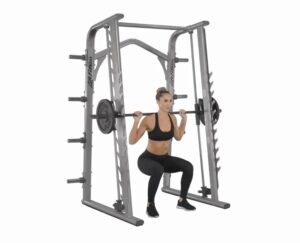
Reverse hack squat
- The height of the shoulder pads should be adjusted first.
- They ought to be at chest height, just low enough so you must drop down and bend your knees a little.
- Select a weight that will push you enough to complete multiple repetitions with proper form.
- Turn to face the machine so that the back pad is in front of your chest.
- To ensure that your knees can bend easily, place your feet close to the platform’s base, leaving just enough space between them and the machine.
- Place the shoulder pads comfortably on your traps while keeping your feet shoulder-width apart.
- When you stand up straight and fully stretch your knees, you can release the weight.
- By shifting your feet on the platform, you can center your body.
- Verify that your feet are spaced roughly shoulder-width apart.
- Squat down to start lowering your body toward the platform; let your shins and knees go well beyond your toes.
- Allow your hips to fall and swing back.
- Make sure your back is straight and not overly curled.
- Your quads will contract deeply if you let your butt go below your knees.
- Return your hips and knees to the starting position carefully after a short time of holding at the bottom of the action.
- To maintain continuous quad tension, keep your hips and knees slightly bent at the peak of the exercise.
- Then relax.
- Continue for 8-10 repetitions.
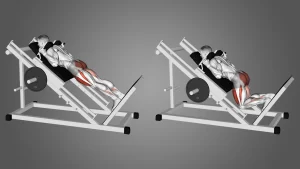
Narrow hack squat
- Beginning with your shoulders tucked under the back pads of the hack squat machine, perform this exercise with your back flat on the pads.
- Next, take a very narrow stance with your toes pointed out, placing your legs less than shoulder-width apart.
- Extend your legs without locking your knees, then start lowering the machine while bending your knees.
- Continue this motion until your knees and upper legs are at a ninety-degree angle.
- Elevate yourself back to the starting posture by thrusting upward with your heels.
- Then relax.
- Perform this exercise 8-10 repetitions.
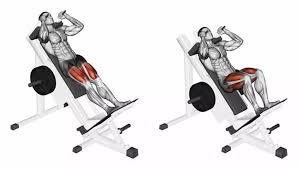
Sumo deadlift
- Start with your feet pointed slightly out in front of a weighted barbell while maintaining a wide stance.
- You should have a wide enough stance such that your arms are inside your knees. With your hands on the bar inside your feet, your elbows should be just inside your knees.
- Bring your hips toward the bar while bracing your core.
- Make sure your muscles are engaged and your entire body feels like it’s on when you engage your glutes, lower back, and legs.
- To align your knees with your feet and toes, perform a quadriceps turn that causes your femurs to spin open in your hip sockets.
- Using an overhand or mixed grip on the bar, slide your shoulder blades back and forth to secure them into place.
- While pressing your legs into the floor, pull up on the bar until it touches the top of the inner circle of the weight plate.
- Don’t raise the bar off the ground just yet.
- Breathe in, push the bar higher, and press your legs into the ground.
- Retain an extended chest and a straight back.
- To raise yourself, pull the bar as near to your body as you can while pressing through your heels to raise yourself.
- At the top position, fully extend your hips and knees while contracting your glutes.
- To prevent hurting your lower back, carefully and deliberately reverse the movement while maintaining the bar’s contact with your body.
- Then relax.
- Perform this exercise 8-10 repetitions.
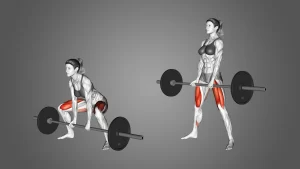
Belt Squat
- A lifter wears a belt fastened to their waist by a cable.
- After that, the belt passes through many pulleys and is attached to a loading mechanism.
- Additionally, there are machines for belt squats that have a chain and a belt fastened to a free-weight system.
- This keeps the learner’s hands free and allows him to execute any variation of the squat he wants without hurting his back.
- When performing hack squats with the belt machine, make sure your shins are still parallel to the floor.
- Return to your neutral position after that.
- Then relax.
- Perform this exercise 8-10 repetitions.
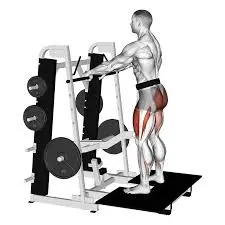
Leg press machine
- Your body should be in an appropriate position when using a leg press machine.
- Place your head and back comfortably against the padded support as you sit on the machine.
- Keeping your heels level, place your feet on the footplate approximately hip-width apart.
- Rather than being higher, your butt should be flat against the seat.
- At the knees, your legs should be at a roughly 90-degree angle.
- Your knees should not be bent inward or outward; instead, they should be parallel to your feet.
- Be careful to maintain this alignment while you press.
- Holding onto the assist handles will help to support and maintain the alignment of your head and spine.
- Clutch your abs while using your forefoot and heels to push the support away.
- Staying flat on the footplate is important. It is never appropriate to move the pad forward only with the front of your foot or toes.
- As you release the air, extend your legs and keep your head and back flat against the seat pad.
- Instead of moving quickly, extend with careful control.
- At the peak of the movement, pause.
- Confirm that your knees are not locked out or bending inward or outward.
- Return to your neutral position after that.
- Then relax.
- Perform this exercise 8-10 repetitions.
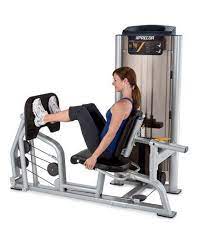
Sissy Squat
Bodyweight sissy squats are typically performed with a brace at first, and later without it. Be kind to yourself and begin slowly.
- Step your feet so that your toes are under the holders and your legs are firmly against the pad.
- You simply lie back till your thighs are parallel to the floor after that.
- Make sure your torso remains as upright as you can.
- A common mistake made by learners is to assume a back squat position by sitting back, flexing their hips, and bending forward.
- Maintain an upright posture with your body such that your legs and torso are parallel to each other and upright.
- Return to your neutral position after that.
- Then relax.
- Perform this exercise 8-10 repetitions.
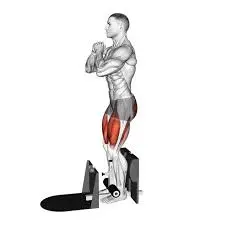
Plie Squat
- Select a dumbbell or kettlebell and set it on the floor so that it is vertical.
- Assume a posture that is broader than your shoulder width and extend your arms straight down to the floor.
- With both hands, hold the dumbbell or kettlebell as you squat down.
- As you stand tall, keep your abs tight and press your feet firmly into the ground.
- Return to the starting position slowly
- Then relax.
- Perform this exercise 8-10 repetitions.
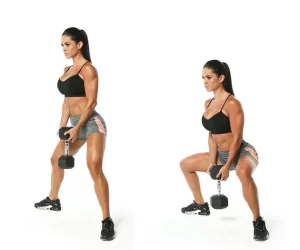
Heels Elevated Hack Squat
- Put a squat wedge or a few weight plates on the ground.
- Just your heels should be on the raised platform as you place your feet there, with your feet slightly wider than hip-width apart.
- You need to be capable of reaching your toes.
- Inhale deeply, tense your quads and core, and then gradually lower yourself into a squat.
- At the bottom of the movement, pause.
- Exhale and push through your heels to send yourself back to the starting position.
- Stop at the top and contract your quadriceps.
- Then relax.
- Perform this exercise 8-10 repetitions.
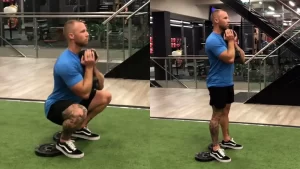
Landmine Hack Squat
- Stand facing the other end of the barbell after putting one end of it into the landmine device.
- Having your knees slightly bent, place your feet hip-width apart.
- You should stand tall, with your feet shoulder-width apart and your knees slightly bent.
- For your head and neck in an upright position, your shoulders should be squarely over your hips.
- For the duration of the exercise, your chin should stay tucked in.
- To establish a stable foot position, divide your weight and use your feet to grip the floor.
- Clasp both hands around the end of the bar with a full grip.
- Keep your elbows in close reach to your ribs. Make use of your core.
- Your pelvis should be slightly pulled in, and your ribs should be down. This is where you should start with every single repetition.
- Bend your hips, knees, and ankles to start the downward motion.
- Drop until your legs are in line with, or just slightly off of, the floor.
- You should have an even distribution of weight on your feet.
- In the bottom position, pause.
- Step up into a standing position by pressing your feet into the ground.
- Focus on controlling through your heel and midfoot while maintaining toe contact.
- As you start to stand, contract your glutes, keep your chest up, and let your knees and hips straighten.
- After performing the exercise, tense your quadriceps and glutes while maintaining a neutral spine.
- Then relax.
- Perform this exercise 8-10 repetitions.
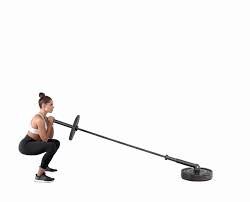
Barbell Hack Squat
- Holding a barbell behind you at arm’s length and placing your feet shoulder-width apart, stand up straight.
- Keeping your palms facing back and your hands shoulder-width apart, grab the barbell.
- For this exercise, you can improve your grip by using wrist wraps. This is where you’ll start.
- Squat until your upper thighs are parallel to the floor, maintaining an upright posture with your head, eyes, and back straight.
- Breathe as you slowly lower.
- As you exhale, raise yourself back up while primarily using your heel and tightening your thighs.
- Then relax.
- Perform this exercise 8-10 repetitions.
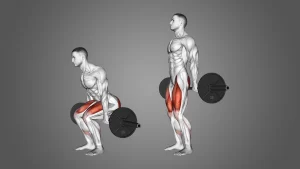
Goblet Squat
- Place your feet slightly wider than hip-width apart and point your toes slightly outward while standing.
- Hold a kettlebell at your chest with both hands, one on each side of the handles, holding it like a goblet.
- To place the goblet exactly in the middle of your chest, bend your elbows.
- Use a smaller kettlebell or nothing at all to warm up so you can grasp the movement.
- After that, increase the weight for the entire set.
- Maintain your eyes forward and your back neutrally in line throughout the squat by engaging your core and gazing straight ahead.
- To perform a squat, press your hips back and bend your knees.
- Breathe in during this decreasing motion.
- Hold the kettlebell near your body the entire time you perform the movement.
- As you keep lowering yourself and pressing your hips back, concentrate on maintaining a tall chest.
- Getting your hips below parallel with your knees is the aim.
- It would be best if you did not come up on your toes when you squat, so ensure your weight stays evenly distributed across your feet or a little more toward your heels.
- At the bottom of the squat, check your position.
- Place your elbows inside of your knees in that position.
- This makes it more likely that when you lower yourself into a deep squat, your knees will stay in line with your toes.
- To get back to where you were, reverse the motion and push through your heels.
- To fully engage your glutes, exhale as you rise and push your hips forward at the top of the squat.
- Drop the kettlebell softly after completing a full set. never, ever let go of a weight from a height.
- Then relax.
- Perform this exercise 8-10 repetitions.
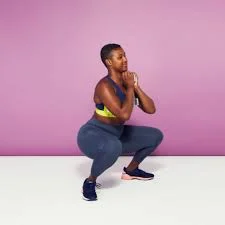
Frequent Mistakes in Hack Squats:
Avoid making the following common mistakes when performing hack squats;
- lifting the weight with extreme progress, rounding your lower back, and lifting your heels off the ground. Focus on using the targeted muscles with a calm, planned motion for optimal results.
- The majority of the time, your hack squat form will be the same as a traditional squat, but you should slightly adjust where your feet are placed on the platform.
- To properly squat, maintain a good 90-degree angle between your hips and knees, and keep your knees placed over your heels, make sure your feet are a bit higher up on the platform.
- If your feet are too close to your body, your knees may jut out past your toes during your squat, placing even more stress on your knee joints.
- Additionally, don’t forget to drop as low into your squat as possible, working through your whole range of motion.
- If there’s a chance to squat extensively, the hack squat machine is the ideal apparatus to do so because it has so many controlled aspects.” In different ways, you won’t be concerned regarding falling or getting tangled in your squat with a heavy barbell if you go too low to stand back up.
Tips for comfortable training and safety considerations:
You must concentrate on safety and proper technique when performing any workout, even hack squats. Carefully about the following advice to guarantee a secure and productive workout.
- The right warm-up and stretching are essential before starting hack squats. Your muscles need to be warmed up and ready for the exercise. To improve blood flow to your muscles, try light cardiovascular exercises like cycling or jogging. Stretching exercises like leg swings, walking lunges, and hip rotations are also beneficial because they target the muscles used in hack squats.
- Modifying the Hack Squat Setup If you’re applying a hack squat machine, it’s critical to adjust it to your unique body metrics. Make sure the shoulder pad is comfortably resting on your upper back and shoulders to provide the full range of motion and ideal positioning. Also, the seat height is modifiable.
- Seeking advice from a qualified personal trainer is beneficial if you are new to strength training in general or hack squats in particular. A personal trainer can evaluate your fitness level, instruct you in appropriate form and technique, and design a personalized exercise program that works with your capabilities and goals. They can also offer helpful feedback and encouragement to help you advance and stay injury-free.
Does anyone have any reason not to participate in?
A hack squat machine is very adaptable, so it should be fine for everyone.” However, since the machine is a large piece of equipment and you need to learn how to release the handle safely, it is a good idea to ask a trainer how to use it for the first time.
You should generally avoid the hack squat if you have knee or lower back problems. The gadget does help with stability, but the joints will still be under tension, which could make any current issues worse.
Summary
Hack squats are a very powerful leg workout that can help you build lower body strength and power. Hack squats are a great leg exercise that can help you reach your fitness objectives and offer a lot of advantages. A combination exercise that focuses mostly on the quadriceps, hamstrings, and glutes in your legs is the hack squat.
They allow for a more focused and regulated workout because they involve performing the movement with a barbell or a hack squat machine. Hack squats are a different and more intense stimulus for leg development than standard squats, with a greater focus on the quadriceps.
A good workout to strengthen your legs, especially your quadriceps, is the hack squat. To get even more advantages, you can also attempt a few variants. Hack squats are a useful exercise for adding to your routine, despite your level of experience in powerlifting, bodybuilding, beginner lifting, or anywhere in between.
It is crucial to put proper form, technique, and safety first when performing hack squats with a barbell or a hack squat machine. There are other hack squat variations that can give your leg muscles a different kind of stimulus, like reverse hack squats. Furthermore, it is imperative that you consult a personal trainer, particularly if you are unfamiliar with strength training or hack squats.
FAQs
A traditional leg workout that works well for strengthening your quads, glutes, and adductors is the machine hack squat. The hack squat is a cross between the leg press and the barbell squat. It emphasizes your quadriceps and requires an erect body stance, just like the front squat or even the squat, but it uses a machine that is more stable than the leg press.
You’ll typically see greater overall benefits, like increased muscle growth, strength, and mobility, when you work in the widest range of motion possible in the working joints. If you’re not physically capable of going much deeper, squat as low as you can go at this point.
A great way to engage and improve your leg muscles, including your quadriceps, glutes, and adductors, is to perform hack squats. Its stability and fixed line of motion allow you to concentrate on the muscles being used rather than worrying about your balance. The hack squat might be a useful squat alternative if you struggle with normal squats or have balance or mobility problems.
The hack squat is potentially just as effective as squats for strengthening your lower body and developing leg muscles. Hack squats, however, do not train your balance and stability in the same way as free barbell squats do.
Due to the intensity with which the muscles are worked, the hack squat might be seen as difficult. Since it is difficult to deceive yourself and let other muscles take up the workload, you may eventually reach a level of muscle exhaustion that you do not usually experience in the hack squat.
The entire lower body, including the calves, quads, hamstrings, and glutes, is worked during a hack squat, along with the core. If you focus on your quadriceps, your front legs will experience the effects later.
Start with a weight that you can manage and perform two to three sets of eight to twelve repetitions for the hack squat. Select a weight that allows you to perform all sets and repetitions with proper form.
One of the main exercises on leg day is the hack squat. Hack squats use less of the back and core muscles and more of the quads and glutes. Regular squats are fine too, unless you’re a professional bodybuilder, in which case they can aid in the development of leg muscle.
Using the same machine but with your back to it, is the reverse hack squat. You just place your shoulders under the pad to set up, since obviously, your back is not on it. Next, flex your hips and push your butt back to decline.
All things considered, the hack squat is an excellent workout for strengthening your legs. You can perform various variations of this exercise, which targets the muscle from different angles than the conventional Hack squat.
Knee pain can be avoided from hack squats if you load and increase them gradually. In fact, they can assist you in developing healthier, stronger knees that can withstand any hardship. Just always keep in mind to pay attention to your body, modify your training as necessary, and get expert assistance if necessary!
Hack squats primarily target the quadriceps, which are located in the front of the thigh, yet these muscles are beneficial for leg growth overall.
Squatting frequently does have advantages. Additionally, lifters with longer limbs are usually poorer squatters than those with shorter limbs. Improved technique is one of the benefits of daily squatting. Using pauses in the aperture improves the position and increases strength.
Hack squats can be modified with a variety of other exercises, depending on the goal to be achieved. These are a few alternatives,
Barbell Hack Squat
Landmine Hack Squat
Smith Machine Hack Squat
Reverse Hack Squat
Pile Hack Squat
Leg press machine
One kind of squat that is performed inside a machine is called a hack squat. Hack squats work the quads and glutes, which are the muscles in your legs. There are several significant variations between a back squat and a hack squat
While squats are a great way to build muscle in your legs, elderly people should avoid any exercise that requires them to bend their knees deeply. Knee joints, which are frequently affected by arthritis, are strained during deep squats. When one has back or leg issues, it can be challenging to keep proper form when performing squats.
Just raise as much as you are able to.
When your physique isn’t ready, don’t overdo the weight. When performing a squat with good form, you will gain more benefits than when lifting excessive weight. Injuries may result from lifting excessive weight because it can strain your knees, hips, and lower back.
Depending on your fitness level and targets, 20 squats may or may not be sufficient for the day. Starting out with 10-20 squats a day can be a great way for beginners to begin developing their strength and endurance. But you will have to increase the amount of squats you perform over time if you want to see more noticeable results.
The hack squat is a static exercise. That isn’t always helpful for people who have hip or knee problems. The hack squat still requires nearly full-body engagement even though it does away with some of the stabilizing components of a typical squat.
By increasing leg strength, you can enhance more explosive sports like sprinting. The hack squat can help with this. You can put a lot more pressure on your quads than you would in a rear squat because you are not activating your trunk. For quad development, this improves it.
The hack squat is an intense workout that targets the core muscles, which include the rectus abdominis and internal and external obliques, as well as all lower-body muscles, such as the quadriceps, hamstrings, glutes, calves, and hip flexors.
As the machine offers support and control, the hack squat typically requires less mobility than free weight squats. Therefore, maintaining proper form and range of motion in both exercises requires sufficient hip and ankle mobility.
Hack squats should be included in a comprehensive leg workout program in order to get their full benefits. Exercises like leg presses and lunges can be utilized alongside hack squats to create a well-rounded leg workout that works different muscle groups and movement patterns.
References:
- Del Turco, L., and Falk, M. (2023, December 1). How to Develop Serious Lower-Body Strength with a Hack Squat. Form. How to Hack a Squat Machine: https://www.shape.com/fitness/tipsReference within the text: Falk and Del Turco (2023)
- Davis, N. (November 22, 2019). How to Squat Correctly. Basic bodyweight squat form: https://www.healthline.com/health/fitness-exercise/proper-squat-form# Citation inside the text: Davis, 2019
- Machine Hack Squat. [May 7, 2021]. Strength and Muscle. Hack-Squat: https://www.muscleandstrength.com/exercises.htmlReference within the text: Machine Hack Squat (2021)
- Zucker, J. Sept. 7, 2022. The Pros Explain How to Perform the Hack Squat and Develop Your Quads | BarBend. BarBend. https://barbend.com/hack-squat/ Reference within the text: Zucker, 2022
- Boyce, L. September 30, 2022. The Benefits of the Hack Squat, Its Variations, and More – Dissolving Muscle. fracturing muscle. /hack-squat on breaking muscle.com Citation inside the text: Boyce (2022)
- How to Perform Hack Squats: Benefits & Working Muscles. (n.d.). StrengthLog is available at https://www.strengthlog.com/hack-squat-machine. In-text Citation: (Muscles Worked & Benefits of How to Perform Hack Squats, n.d.)
- Madhuri, A. (October 27, 2023). Use hack squats to tone your hips: This is the correct way to perform the glute workout. The website Healthshots provides information on fitness, muscle gain, and hack squats. Citation inside the text: (Madhuri, 2023)
- S. F. SET (n.d.). The Top 8 Hack Squat Substitutes That Target the Same Muscles. SET IN FOR SET. Hack-squat-alternatives: https://www.setforset.com/blogs/news Reference within the text: SET, n.d.
- M. (May 2, 2022). The Advantages And Techniques Of The Reverse Hack Squat Reverse Hack Squat: https://soma.fitness/2022/05/02/ -SOMA. SOMA In-text Reference: (2022)
- How to Perform a Safe Leg Press. November 3, 2022. well-fitting. /How-to-Do-the-Leg-Press-3498610@verywellfit.com Reference inside text: (How to Perform the Leg Press Safely, 2022).
- Muscles Worked & Proper Form: How to Perform Sumo Deadlift. (n.d.). StrengthLog has a sumo deadlift available at https://www.strengthlog.com/. In-text Citation: (Muscles Worked & Proper Form: How to Perform Sumo Deadlift, n.d.)
- Image 2, Reverse Hack Squat Machine: Advantages, Activated Muscles, and Additional Information – Inspire US, n.d. Motivate US. Reverse-hack-squat machine: https://www.inspireusafoundation.org/ In-text Citation: (Inspire US, n.d.) “Reverse Hack Squat Machine: Benefits, Muscles Worked, and More”
- Image 4, Luna, D. April 17, 2023. Benefits of the Sumo Deadlift, the Used Muscles, and More. Motivate US. /sumo-deadlift/ https://www.inspireusafoundation.org Within-Text Reference: (Luna, 2023)
- Image 5, Complete Citation: 4 Greatest Belt Squat Substitutes (Includes Images) – Motivate US (n.d.). Motivate US. The website InspireUSA Foundation offers alternatives to the belt-squat. In-text Citation: Inspire US, n.d., “4 Best Belt Squat Alternatives (With Pictures!)”
- Image 7, Online Store 38668791 (n.d.). 38668791 – Online Store. 3/866791.html at likeroommk.live/product_details Reference within the text: (38668791 – Online Store, n.d.)
- Image 8, Online store 51106010 (n.d.). Here are the product details for $51106010 at Freekicks. life. Reference within the text: (51106010 – Online Store, n.d.)
- Image 9, R. on February 6, 2023. Reasons to Include the Heel-Elevated Goblet Squat in Your Exercise Program. Moderate. Why you should incorporate heel-elevated goblet squats into your workout routine (409b87bccf52) In-text Reference: (2023)
- Image 11, Luna, D. (May 25, 2023). Four Main Advantages and Worked Muscles of the Barbell Hack Squat. Motivate US. the barbell hack squat on https://www.inspireusafoundation.org Within-Text Reference: (Luna, 2023)

